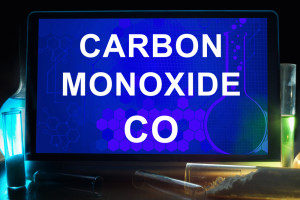 While most people know that homes are required by law to have smoke detectors, which quickly sense smoke in case of a fire and alert the residents to ensure a quick response, fewer know that the law also requires carbon monoxide detectors. That’s because carbon monoxide is a lesser-known danger than fire – but, in some cases, a much more potent one.
While most people know that homes are required by law to have smoke detectors, which quickly sense smoke in case of a fire and alert the residents to ensure a quick response, fewer know that the law also requires carbon monoxide detectors. That’s because carbon monoxide is a lesser-known danger than fire – but, in some cases, a much more potent one.
What is carbon monoxide?
Carbon monoxide, or CO, is a colorless, odorless gas that is fatal when inhaled in certain quantities and left untreated. It is released by the burning of fuel in stoves, lanterns, gas ranges, furnaces, and other indoor appliances, as well as cars and trucks outdoors.
What are common sources of carbon monoxide leaks?
Carbon monoxide can leak out of appliances and vehicles and build up within an enclosed space, such as a home or car, leading to severe illness or death. Leaks often occur when gas appliances, such as refrigerators or stoves, are not vented properly. The carbon monoxide produced by these appliances is released outdoors through pipes; when these pipes aren’t fitted properly, the carbon monoxide can instead leak into the home. It is important to have horizontal pipes that lead to the outdoors slanting upward slightly, so in case of improperly fitted joints, the CO will still be able to escape. In a vehicle, leaks can occur when there are small gaps or holes in the exhaust system, which cause the car exhaust to seep into the interior of the car instead of being released outside.
What is carbon monoxide poisoning, and what are the symptoms?
Carbon monoxide poisoning is an illness caused by inhaling CO at high levels. Symptoms start by resembling the flu; headache, dizziness, nausea, fatigue, and trouble breathing all may develop. Spotting these symptoms early on can save a person’s life; as the poisoning develops, however, the person can experience mental confusion, vomiting, loss of muscle function, loss of consciousness, and ultimately death.
How can I prevent carbon monoxide poisoning in my home?
The best way to prevent carbon monoxide poisoning is to keep your carbon monoxide detector up-to-date and functional, as well as all of your heating and other non-electric appliances, which should be checked by a technician every year. There are also many simple mistakes to avoid, such as using flameless chemical heaters, gas camp stoves, or charcoal-burning devices indoors.
What are the specific laws and requirements for carbon monoxide detectors in Connecticut?
Connecticut requires carbon monoxide detectors to be installed in all new residences and schools, including residences meant for one or two families. These detectors protect families and individuals from carbon monoxide poisoning. Make sure to test and change the batteries in your detector once a year.
For even more tips on how to maintain a safe household for you and your family, visit our blog archives. Be sure to contact Waitte’s Insurance Agency Inc. to review or renew your homeowners’ insurance policy.
